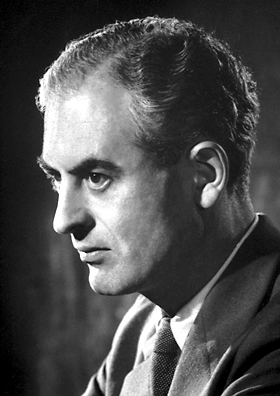History and naming of human leukocyte antigens
Human leukocyte antigens (HLA) are a group of proteins found on the surface of most cells in the human body. They play a crucial role in the immune system's ability to distinguish between the body's own proteins and those that are foreign. The history and naming of these antigens have evolved significantly since their discovery, reflecting advances in our understanding of the immune system and the genetic basis of these molecules.
Discovery[edit | edit source]
The discovery of HLA dates back to the 1950s when a group of scientists, including Jean Dausset, were researching why some people had severe reactions to blood transfusions. Dausset identified a leukocyte antigen, which he named Mac, marking the discovery of the first HLA antigen. This groundbreaking work laid the foundation for the field of histocompatibility and earned Dausset the Nobel Prize in Physiology or Medicine in 1980.
Naming System[edit | edit source]
The naming system for HLA has evolved as our understanding of the complexity and genetic diversity of these molecules has grown. Initially, HLAs were named sequentially as they were discovered (e.g., HLA-A1, HLA-A2). However, as the molecular basis of HLA was elucidated, it became clear that a more systematic approach was needed.
The current naming system reflects the genetic loci and the specific alleles at those loci. For example, HLA-A*0201 refers to a specific allele of the HLA-A gene. The asterisk indicates a specific allele, the number following the gene name (e.g., 02) indicates the serotype or group of alleles, and the subsequent numbers (e.g., 01) specify the allele.
HLA Complex[edit | edit source]
The HLA complex is located on the short arm of chromosome 6 and is one of the most gene-dense and polymorphic regions in the human genome. It is divided into three main regions:
- The Class I region, which includes HLA-A, HLA-B, and HLA-C genes, primarily presents peptides from inside the cell to T cells.
- The Class II region, which includes HLA-DP, HLA-DQ, and HLA-DR genes, presents antigens from outside of the cell to T cells.
- The Class III region contains a variety of genes with immune and inflammatory responses but does not encode HLA molecules.
Significance in Transplantation and Disease[edit | edit source]
HLA typing is crucial for organ transplantation, as compatibility between donor and recipient HLA can significantly impact the success of the transplant. Mismatches can lead to transplant rejection and other complications. Additionally, certain HLA types are associated with increased or decreased susceptibility to a variety of diseases, including autoimmune diseases, infectious diseases, and cancers.
Research and Future Directions[edit | edit source]
Research in the field of HLA continues to expand our understanding of the immune system and its complexities. Advances in genomics and bioinformatics have facilitated the discovery of more HLA alleles, improving our ability to match organ donors and recipients and to understand the genetic basis of diseases. Future research aims to further elucidate the role of HLA in disease and health, potentially leading to personalized medicine approaches based on an individual's HLA type.
Navigation: Wellness - Encyclopedia - Health topics - Disease Index - Drugs - World Directory - Gray's Anatomy - Keto diet - Recipes
Search WikiMD
Ad.Tired of being Overweight? Try W8MD's physician weight loss program.
Semaglutide (Ozempic / Wegovy and Tirzepatide (Mounjaro / Zepbound) available.
Advertise on WikiMD
WikiMD is not a substitute for professional medical advice. See full disclaimer.
Credits:Most images are courtesy of Wikimedia commons, and templates Wikipedia, licensed under CC BY SA or similar.Contributors: Prab R. Tumpati, MD






